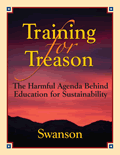BABY IT’S COLD OUTSIDE
by Cliff Bennett
'Chets Garden Center'
January 6, 2014
NewsWithViews.com
Wow, what a cold snap we had last month. That’s only the third time I can remember it being so cold in the 22 years I have lived here. Personally I hate the cold foggy days but it is nice to just sit by the fire and be warm and snug. Colder weather like we had sure wreaks havoc with our homes and our gardens. The problems caused with the pipes and things show up immediately like with some of our plants. The plants damage though may not show until later in the year. Once we have figured we have seen it all not so fast. Our Escallonia, Photinias and Spring Bouquet Viburnums will show their problems a bit later on. The buds on our Rhododendrons may have been damaged as well. No need to panic since it will be what it will be and not much you can do about it at this point.
The snow fall we had was a drier, much lighter snow than some in the past so the good thing was that the damage was kept to a minimum as far as broken branches and down trees. It may sound odd but snow can actually work as an insulator and help our plants stay warmer. You can also apply a product like Wilt Pruf that is an anti-transpirant that will protect your plants from moisture loss. Apply before it freezes to plants such as Rhododendrons, boxwoods, azaleas, hollies and other ornamentals. It also works really well to protect your cut Christmas trees from drying out and dropping their needles which reduces the potential fire hazard.
I noticed that in my own garden that any perennials that still had any life left before the freeze is now done. It would now be the time to finish cutting them down and those of you that mulch your plants can finish doing that. I am sure that the mulched plants were a bit happier that those that were not during this cold snap. I also like to leave most of my ornamental grasses alone as long as I can since many still have their plumes that even when brown can still look really nice. Although when snow or rains hit many times it will lay them out and once down they do not pop back up again. That is when they need to be cut down for the season only to come back fresh next spring.
This is the time of year my business always sees a spike in houseplant sales. We are all spending much more time indoors and we begin perhaps noticing areas in our homes that could be enhanced with a bit of greenery and a nice decorative container. Let’s discuss the ins and outs of this so you can be prepared at time of purchase and increase your chances of long term success. This should be enjoyed rather than an uphill battle for you so I will try to help you avoid the battle part.
Before going out to purchase that new houseplant, take just a moment and look at the light the plant will be getting and have an understanding of how large you would like it to get down the road. The most important thing you can do is when you are looking at the options be sure to ask questions. All plants are not the same regarding the care they need. Some houseplants are very easy to grow while some can be a bit fussy and not as forgiving if the location is less than ideal. The nurseryman can help you make the right choice. If they cannot, consider if you are in the right store or not since good information is vital to your success particularly if you do not know anything about houseplants.
Now that you have selected the plant consider a new container as well. I feel the container is just as important as the houseplant that is in it. This is all part of the home décor. When selecting a new pot it is recommended that you only move up one or two sizes larger than the container it is in now. Helpful hint, some ceramic pots are heavy and difficult to move so rather than planting the plant into the new pot, simply place the plant into the pot so it looks planted but you can easily lift the plant out and take it to the water.
Houseplants usually come in plastic pots and they are much, much lighter. Since the only good way to water a plant is to water well when you do water. In other words water should always drain out the bottom of the pot or you will end up with dry sections in the root ball.
| Subscribe to NWV Southern Oregon Edition Alerts! |
Most problems people have with their houseplants is the tendency to over-watering. Most plant would rather be on the dry side than the wet side. A stressed plant often has more disease and insect problems than a happy healthy plant. When fertilizing, only use slow release types since they give a slow consistent feeding rather than spikes of nutrients often a problem with water soluble fertilizers. When you do encounter insects or diseases don’t panic, simply place an infected leaf in a plastic baggy and take to your favorite nursery and they will help you. Most of the time it will be easy to fix.
I would like to take this opportunity to wish all of the Sneak Preview readers a Happy New Year. I would also like to thank those of you that read this column each month. Happy Gardening.
See Ya at Chets Garden Center. Cliff
� 2014 - Cliff Bennett - All Rights Reserve











 Share
This Article
Share
This Article




